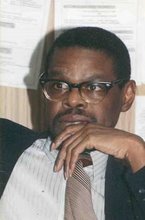In Part I, Eddie Griffin writes:
“What we need in education is a qualitative change and a quantum leap. We are in an opportune vortex where this might be possible.”
In response, the following information and link was provided by email from Jacquitta:
The Bill & Melinda Gates Foundation has announced that many of America's new and redesigned high schools are helping thousands of students who struggled in traditional settings or who might otherwise have dropped out to graduate well-prepared for college and career success.
Working with school districts and school developers, the foundation is helping to support different approaches. In New York City, the forty-seven small high schools that opened in 2002 and 2003 had an average graduation rate of more than 70 percent this year, far exceeding the collective 35 percent rate posted by the schools that were closed and replaced by small schools, thirty of which had graduating classes this year.
(Excerpt from “New and Redesigned High Schools Demonstrate Success in 2007”)
It is part of a growing national movement to reinvent today's high school experience by establishing high expectations for all students and supporting them to meet those academic goals. These new and redesigned schools aim to provide more challenging learning environments for students and teachers, more personalized learning opportunities, and stronger links between what students learn and the world in which they live.
(Source: “Celebrating the Class of 2007 in New and Redesigned High Schools”, Bill & Melinda Gates Foundation Press Release 6/29/07)
The majority of the graduates in the class of 2007 at YouthBuild, which operates twenty-seven schools in thirteen states and Washington, D.C., are advancing to post-secondary education with 36 percent planning to attend two- and four-year colleges and 32 percent planning to attend trade schools. Early College High Schools, which works with Jobs for the Future, posted an average daily attendance rate of 94 percent, and most students outperformed their counterparts in other district schools on both reading and mathematics exams. And the Great Maine Schools Project, a statewide high school reform initiative, reported nearly 100 percent of its students are graduating and enrolling in college.
"Schools and districts across America recognize that in order for all students to succeed, we must provide a new kind of learning," said Allan Golston, president of U.S. Program at the Bill & Melinda Gates Foundation. "These innovative approaches are gaining momentum and showing signs of promise. By focusing on high standards, high expectations, and strong support we can help all students graduate with the skills they need to be successful in college and work."
To date, the foundation has invested more than $1.7 billion to improve high schools, supporting more than 1,800 schools in 47 states and the District of Columbia. Nationally, the Bill & Melinda Gates Foundation and its partners are focused on increasing graduation and college readiness rates by supporting the creation of new high-quality high schools and the transformation of existing low-performing high schools into more focused and effective learning environments.
Footnote:
Bill & Melinda Gates Foundation is guided by the belief that every life has equal value, the Bill & Melinda Gates Foundation works to help all people lead healthy, productive lives. In developing countries, it focuses on improving people’s health and giving them the chance to lift themselves out of hunger and extreme poverty. In the United States, it seeks to ensure that all people—especially those with the fewest resources—have access to the opportunities they need to succeed in school and life. Based in Seattle, the foundation is led by CEO Patty Stonesifer and co-chair William H. Gates Sr., under the direction of Bill and Melinda Gates and Warren Buffett.
Historical Background of Local Involvement
At the August 2006 East and Southeast Fort Worth Economic Summit, hosted by Congressman Michael Burgess, M.D. (TX-26), YouthBuild USA Chairman Roy O. Priest was keynote speaker. Priest is former CEO of National Congress for Community Economic Development and Director for Community Development for the U.S. Department of Housing and Urban Development in Washington, DC (retired) with over 17 years experience with HUD in areas associated with community development.
It was the first, but not the last, time I heard of YouthBuild, the innovative youth and community development program that simultaneously addresses core issues facing low-income communities, such as housing, education, employment, crime prevention, and leadership development. In YouthBuild programs, low-income young people ages 16-24 work toward their GED or high school diploma, learn job skills and serve their communities by building affordable housing, and transform their own lives and roles in society.
In January 2007, Tarrant Area Community of Churches (TACC) was invited by United Way to partner in a grant received from the Bill and Melinda Gates Foundation to convene a two-day forum at Tarrant County College to raise awareness about high-school education, the drop-out rate and college/career readiness. One of the panelists was Dr. Danna Diaz Joseph, new Director of Student Engagement and School Completion for the Fort Worth Independent School District.
Eddie Griffin was a presenter in both above events.
[To Be Continue- Part III]
Thursday, July 12, 2007
Subscribe to:
Post Comments (Atom)





You're quite welcome :) Would you mind if I link your blog on my blogroll?
ReplyDeleteThank you for your kind words. It would be an honor to be included on your blogroll.
ReplyDelete